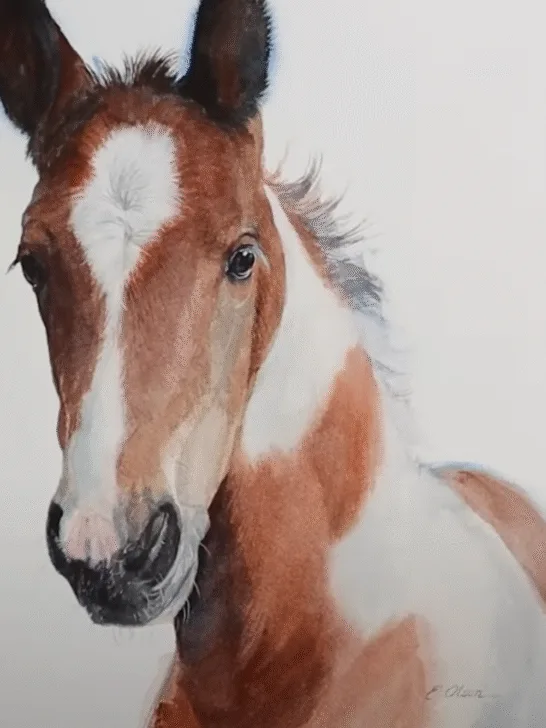Painting horses can be an incredibly rewarding project, especially when you break it down into manageable steps. Today, we’ll walk you through an easy, beginner-friendly method on how to paint a horse in watercolor based on a popular tutorial by Emily, a watercolor artist who specializes in horses.
If you’re ready to capture the spirit and beauty of these magnificent animals, grab your paints — let’s get started!
Gather Your Materials
Watercolor paints (Phthalo Blue, Ultramarine, Indigo, Transparent Brown Oxide, Burnt Sienna, Quinacridone Rose, Yellow Ochre, Scarlet Lake)
Round brushes (Silver Black Velvet)
Grainer brush (Princeton Velvet Touch, ⅜ inch)
Clean water
9 Simple Steps: How to Paint a Horse in Watercolor
1. Start with Wet-on-Wet Painting
- Wet the first area you want to paint — for example, the horse’s ears — using clean water and a brush.
- Drop thick paint into the wet surface, starting with a blue glow (Phthalo Blue mixed with Ultramarine and Indigo).
- Be careful not to over-wet your brush to keep the color from exploding uncontrollably.

2. Build Layers Quickly
- While the paper is still damp, add Transparent Brown Oxide and Indigo for darker areas.
- Work fast to take advantage of soft edges.
- Switch brushes if needed to work with different colors without losing speed.
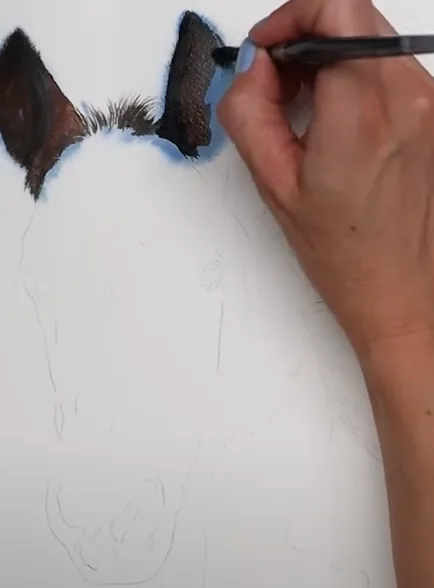
3. Add Texture for Fur
- Use light, upward strokes with a round brush to mimic soft fur.
- For quicker fur effects, spread the brush bristles slightly apart and dab lightly.
- Repeat the process for both ears and the top of the head.
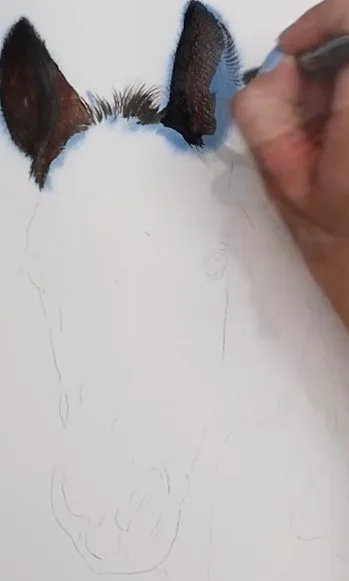
4. Paint the Face and Muzzle
- Wet the entire head area (staying inside the pencil lines) and work clockwise.
- Block in burnt sienna and blue-gray tones, blending while the paper is still glossy.
- For the nose and muzzle, introduce Quinacridone Rose diluted with water to hint at soft pinks.

5. Define the Eyes and Features
- Paint the eyes using Indigo (or black if you prefer), leaving little highlights for a natural look.
- Add shadows under the eyes and along the muzzle with light blue-gray mixtures.
- Use a Grainer brush to create swirling fur around markings like a white blaze or star.

6. Layer to Deepen Color
- Let each layer dry before adding more color (a technique called glazing).
- Use a mix of burnt sienna, quinacridone rose, and ultramarine to build a rich, burgundy-brown tone.
- Keep light layers underneath visible to maintain watercolor’s natural luminosity.
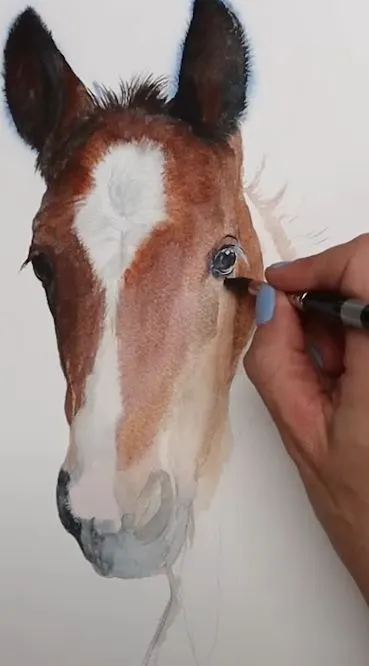
7. Focus Detail on the Face
- Keep the neck and body looser and softer with less detail to draw attention to the face.
- Add veins and slight musculature hints using light blue tints for realism.

8. Add Final Details
- Once dry, use Bleed Proof White and a fine liner brush to paint delicate whiskers and restore highlights.
- Add a few darker whiskers overlapping the background for a more dynamic finish.
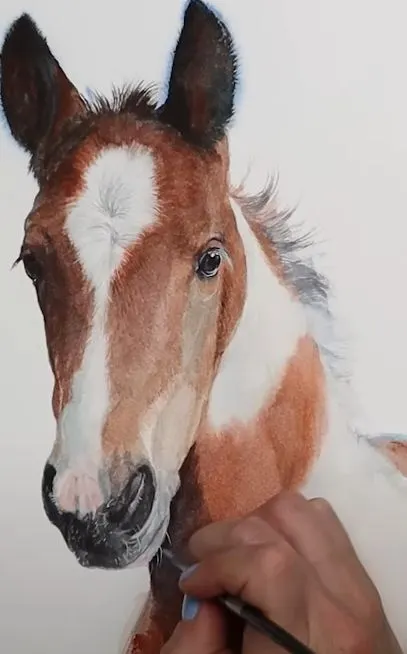
You can also check out, watercolor painting ideas to spark your creativity:
10 Inspiring Watercolor Animal Painting Ideas
9. Step Back and Refine
- Review the painting as a whole.
- Touch up any areas that need more contrast or softness.
- Focus most of the detail and crispness around the horse’s eye and face to naturally guide the viewer’s eye.
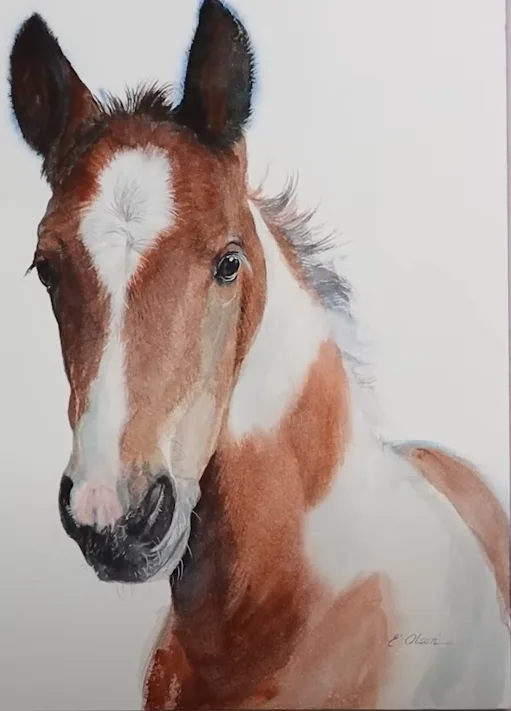
Final Tip:
Patience is key. Take your time with the early stages, and don’t worry if the first washes look too light or too simple. Watercolor builds beautifully in layers, and each pass adds more life to your horse!
5 Stunning Horse Painting Ideas
If you’re ready to keep exploring after your first painting, there are endless ways to bring horses to life on paper. Here are some creative ideas to inspire your next project!
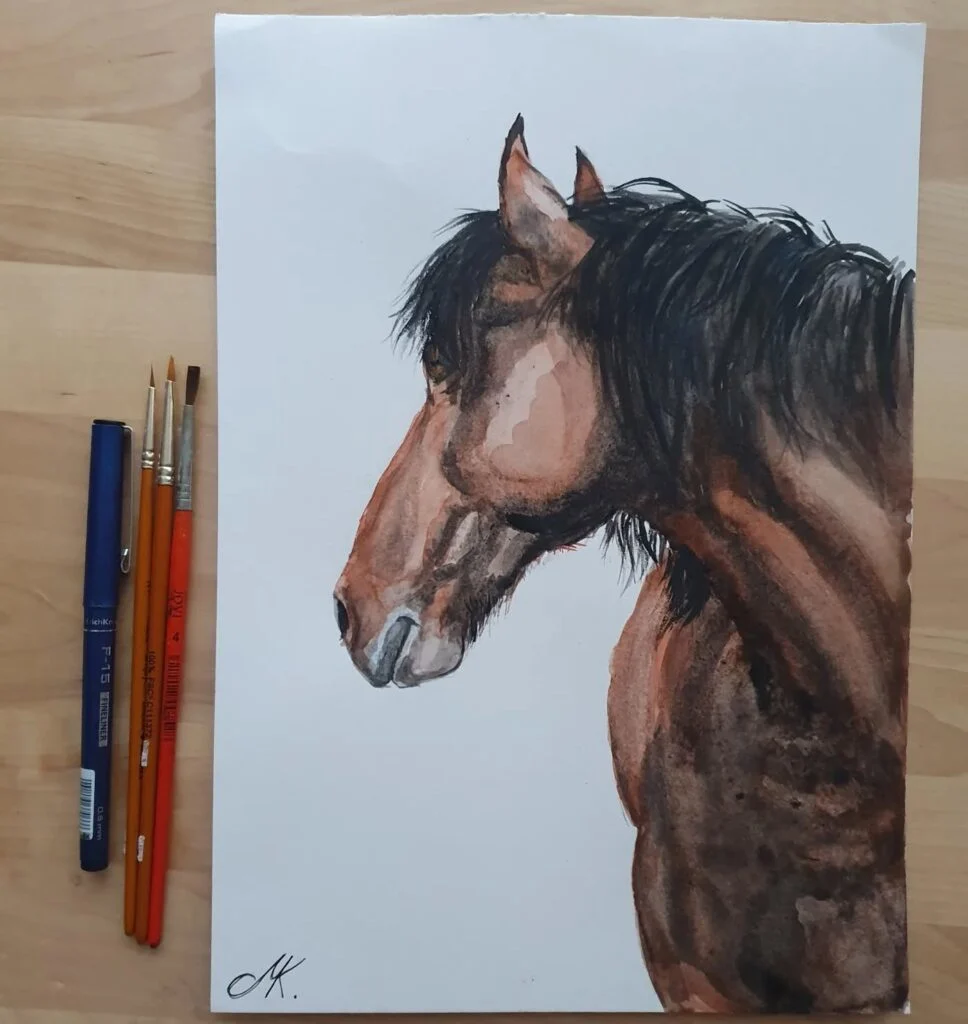

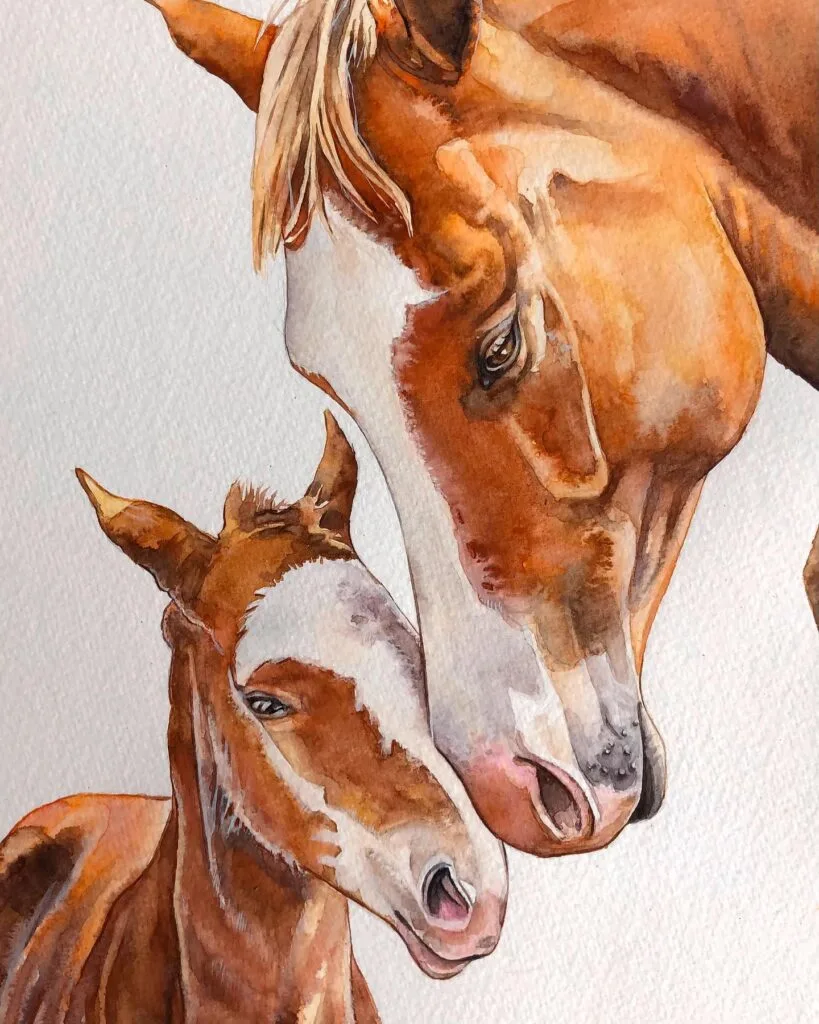
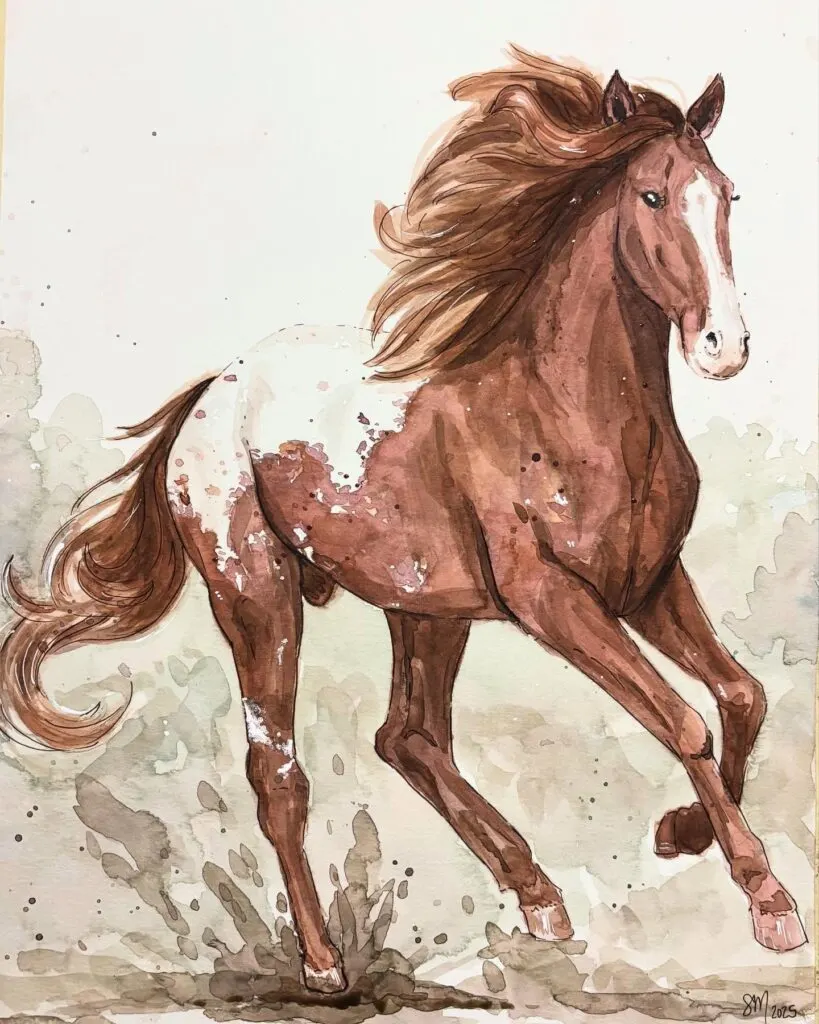
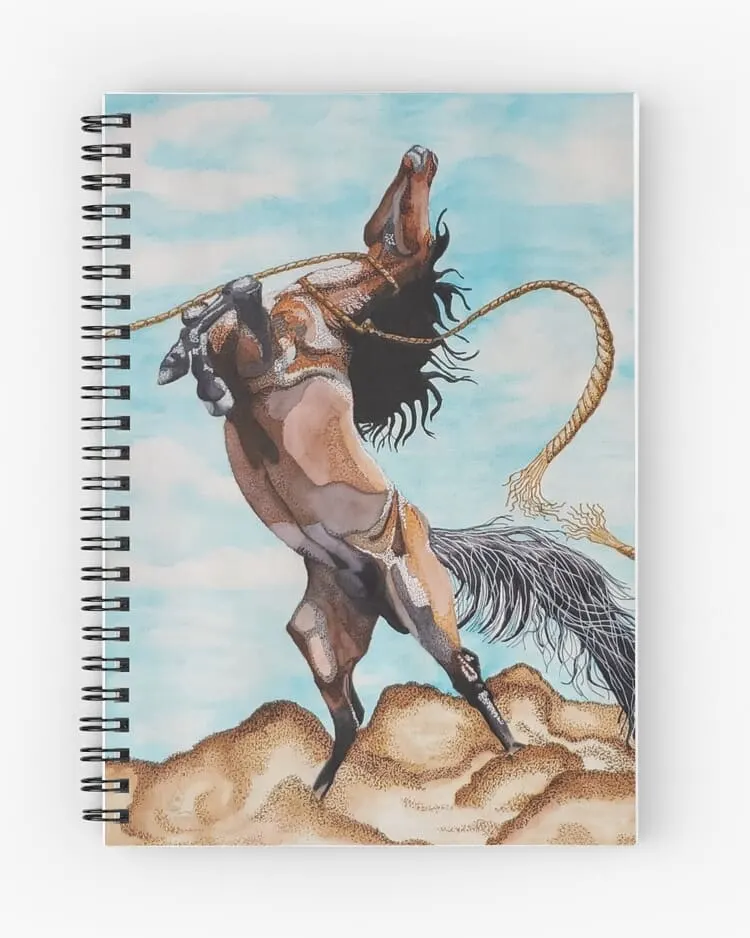
FAQs About Painting Horses
What kind of paint do you use on a horse?
When painting an image of a horse on paper or canvas, artists usually use watercolor, acrylic, or oil paints, depending on the style they want to achieve. If you’re asking about painting directly on a live horse for events like festivals, only safe, non-toxic, water-based paints specifically designed for animals should be used.
Is it hard to paint a horse?
Painting a horse can seem challenging at first because of the complex anatomy and soft fur textures, but with the right approach, it becomes much easier. Breaking the painting down into simple steps—like starting with large color shapes and then layering in details—helps create a realistic and beautiful horse without feeling overwhelming.
What is a common Paint Horse pattern?
One of the most recognizable Paint Horse patterns is the tobiano, where white markings cross over the horse’s back, often forming large, rounded spots. Another popular pattern is overo, which usually has more jagged, irregular patches of white that don’t cross the back. These patterns are great inspiration for creating lively, colorful horse paintings!

